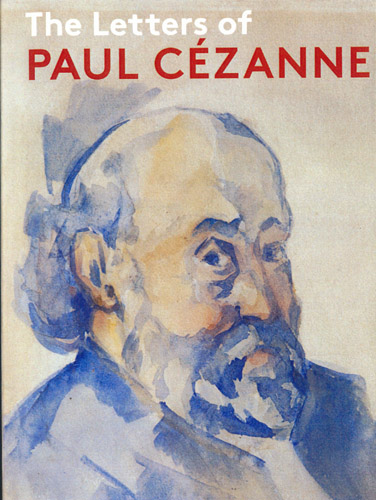The Letters Of Paul Cezanne
Paul Cezanne is acknowledged to be a great painter, but it wasn't so during his lifetime (1839-1906). His parents and family never took him seriously; they scoffed at his work, caricatured his beliefs, treated him as a simpleton. And after he died, his son unloaded many of his canvasses at scandalously low prices, as if they were nothing but junk.
The last
laugh is with Cezanne, of course: today his impressionist paintings sell
for millions of dollars, and he is credited, along with the likes of Picasso,
Matisse and Gauguin, as being one of the iconic figures of 20th century
modern art. Not bad for a man whom many considered stupid.

Cezanne himself was partially to blame for that. As Alex Danchev writes
in the introduction to THE LETTERS OF PAUL CEZANNE, the painter "could
play the country bumpkin with the best of them." Although he was
deeply cultured, he pretended to be uncivilized. "Cafe society left
him cold...salons of any kind made him squirm."
At bottom, Danchev believes, Cezanne was "a curious mixture of of pride and humility...He masked both by appearing as a sort of puppet figure...Being Cezanne entailed an element of performance. In person, this was a convenient disguise. On paper, the mask drops. The intelligence shines through. The letters give lie to the caricature."
THE LETTERS OF PAUL CEZANNE contains 275 letters (edited and translated by Danchev) to his family and such friends as the painters Claude Monet and Camille Pisarro, the dealer Ambroise Vollard, and--above all--to the writer Emile Zola. Close from childhood, Zola stood by Cezanne all his life, defending him against his enemies, encouraging him in his experiments, providing spiritual and material help whenever needed. Theirs is one of the most remarkable artistic friendships in French history.
Also included in this important collection are dozens of illustrations of Cezanne's paintings, plus photos of the artist and his contemporaries. What emerges most strongly from the book's 392 pages is a portrait of Cezanne as truth-seeker. "In his art he had nothing to hide. Painting was truth-telling or it was nothing," Danchev says. "That was his life's work and his legacy."
